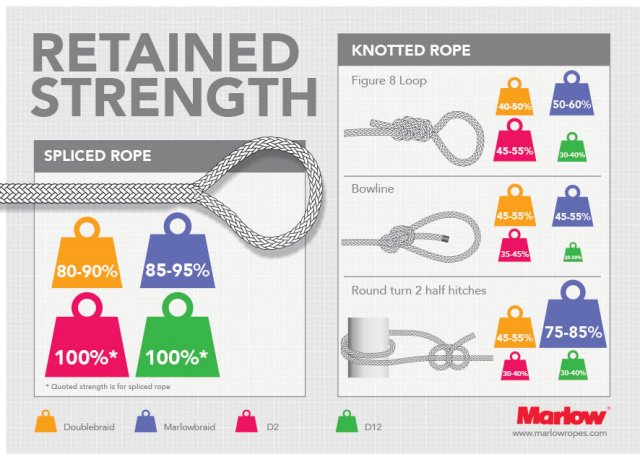Knots V Splicing

It is likely anyone who has ever used ropes has learned to tie knots – to create eyes, connect rope to objects or even just for decoration. There’s a knot for every application and for many applications there is no better solution than a knot.
However, there are limitations and every time a rope is distorted, strength is lost. A bent rope means that some of the fibres on the outside of the curve will have to carry more load while fibres on the inside may take none of the load. In addition, parts of the rope in a knot may be compressed such that the fibres are unable to move to share the load.
The level of strength reduction can be substantial. In some cases, strength can be reduced by over 50%.
However, this will depend on many factors, including the type of knot, how the knot is tied, how neat it is, how the rope is loaded and the design of the rope amongst others. In contrast to these figures, a well spliced rope will typically retain 90% of its quoted strength. In fact, some ropes (typically HMPE products) are often quoted with spliced strength, as this is how the product is tested. If strength of termination is critical then a splice is always the preferred choice.
Marlow Ropes is the market leader in Leisure Marine rope and has over 200 years of experience in rope care and advice. This helpful infographic will explain more about the difference in strength between knots and splicing.
Look out for Marlow’s new Guide to Splicing which will launch this Autumn at La Grand Pavois, La Rochelle and METS in Amsterdam.











